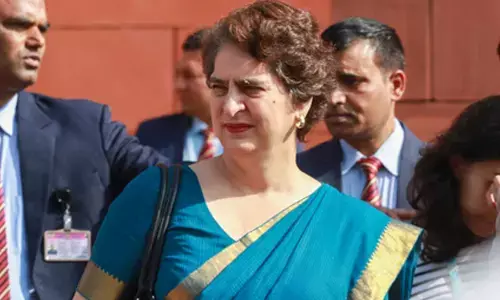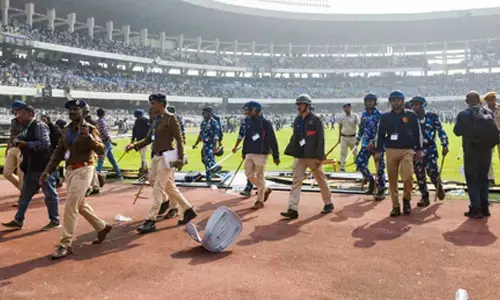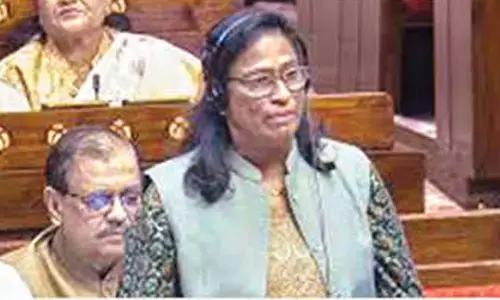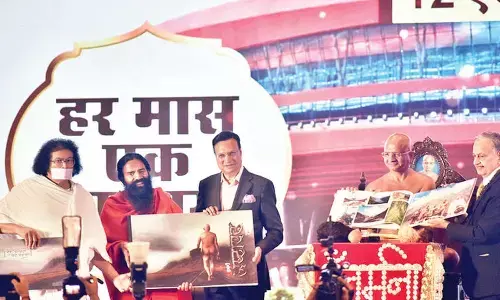Ragamalika: A garland of Ragas

Ragamalika: A Garland Of Ragas. Ragamalika is a popular and innovative form of composition embedded in Carnatic music. Usually, a ragamalika composition contains multiple ‘charanams’ and each ‘charanam’ is set to a distinctly different raga but with the same talam and ragas are not replicated.
Ragamalika is a popular and innovative form of composition embedded in Carnatic music. Usually, a ragamalika composition contains multiple ‘charanams’ and each ‘charanam’ is set to a distinctly different raga but with the same talam and ragas are not replicated. Also, allied or similar ragas do not appear more than once. To put it in other words, consecutive ragas should possess distinct melodic character. Usually, after rendering each ‘charanam’, it returns to the ‘pallavi’ which is also in a different ‘ragam’. The selection of ragas as well as the order is based solely on aesthetic and melody based considerations. There should not be any abruptness while shifting from one raga to the next and the flow of music should be neat and smooth. The number of ragas employed in any composition may vary from two to seventy two and sometimes more, the longest, so far being hundred and eight.

Ragamalikas appear not only in kriti format, but also in other formats like, varnams, swarajatis, jatiswaras, slokas, thillanas, and concluding mangalam pieces. Since there are hundreds of ragas and talas in Carnatic music system, composers had exploited this format to create numerous ragamalika compositions innovatively on different gods and deities.
Similarly, there are ‘Talamalikas’ where in each segment is set to different tala and may be, one or more different ragas. These types of compositions are more found in dance recitals. Besides, these two malikas, there is yet another form of malika by name ‘Raga-tala-malika’, where in each segment is in different raga and tala and each segment of the composition will have a raga mudra and tala mudra incorporated.
A melodious nava ragamalika tana varnam “Valachi” is a popular one which every student of music invariably learns in early stages. The all-time famous “Bhavayami” of Swati Tirunal is a ragamalika in Roopaka talam. Swati Tirunal is said to have composed this ragamalika depicting the entire ‘Ramayana’ in six ‘charanams’. Similarly, the Sankaracharya’s composition “Bhaja govindam” is another delightful ragamalika set in adi talam. These two ragamalikas were immensely popularised by MS Subbulakshmi’s golden voice and are well known in India and abroad.
“Kamalajasya”, a popular dasavatara ragamalika composition of Swati Tirunal , Harikesanallur Muthiah Bhagavatar’s “Swarnakarshana navavarna” “Sri Viswanatham Bhajeham” of Muthuswamy Dikshitar is composed, in praise of Lord Viswanatha in fourteen ragas are a few other raagamaalikas.
“Ganalolani” , a self-composition of Balamuralikrishna, is a popular ragamalika set in roopaka talam. “Entha mathramuna evvaru talachina”, though not strictly a ragamalika, is a popular and sweet keertana of Annamacharya in Telugu composed in two ragas namely Brindavana Saranga and Mayamalavagowla, set to Misra Chapu talam.
A private album of Ghantasala contains a devotional ragamalika “Sri Venkateswara Prabhata Prardhana”, on Lord Venkateswara.
Looking at Telugu film tunes, “Intha telisi yundi ee guna melaraa” of ‘Devadasu’(old), is a beautiful and melodious ragamalika sung by Raavu Balasaraswati, written by Samudrala Senior and tuned by C R Subbaraman. The ‘pallavi’ and ‘charanam’ are in Kharaharapriya, second ‘charanam’ is in Ranjani and the last one is in Mohana. The switching from ‘charanam’ to ‘pallavi’ and vice versa is so smooth, one forgets to notice the change in ‘ragam’ and ‘bhavam’.
“Mukkoti devathalu okkatainaaru” from ‘Bava Maradallu’ is an ever green ragamalika sung by Ghantasala, written by Arudra and tuned by Pendyala. “Girija Kalyanam”, a yaksha ganam ballet from ‘Rahasyam’, an old Telugu movie, is noteworthy as a pure classical ragamalika employing different ragas. Ghantasala, the music director of the film, deserves all the credit for composing such a marvelous ragamalika. “Hayi hayigaa aamani saage” from ‘Suvarna Sundari’ is another melodious ragamalika in the songs category. It starts with Hamsanandi ‘ragam, goes through brief twists like Kanada and ends with Kalyani. Even today, it is considered to be a melodious song with excellent ‘sahithya’ and ‘raga bhavam’. Adinarayanarao provided the music to the film and almost all songs are evergreen.
Another great devotional ragamalika sung by Ghantasala is “Jaya Krishna Mukundaa Murari”, of ‘Panduranga Mahatyam’(old), an all-time hit song. It is a long ragamalika of 11 minutes duration, employing variety of ragas expressing different ‘bhavas’ praising Lord Krishna. It was a great team effort and credit goes to music director T V Raju, Ghantasala for his magnetic voice and lyricist Samudrala.
“Sri Nagaja”, a ‘harikatha’ from the film ‘Vaagdaanam’, “Aakasa Pandirilo” (Sahana , Madhyamavati) from ‘Rajeswari Vilas Coffee Club’, “Jaya Gana Nayaka” (Gambheera Nata, Todi, Punnagavarali) from ‘Narthanasala’, “Joharu Sikhi pincha Mouli” (Athana, Kanada) from Sri Krishna Vijayam are some other Telugu film based melodious ragamalikas.


















